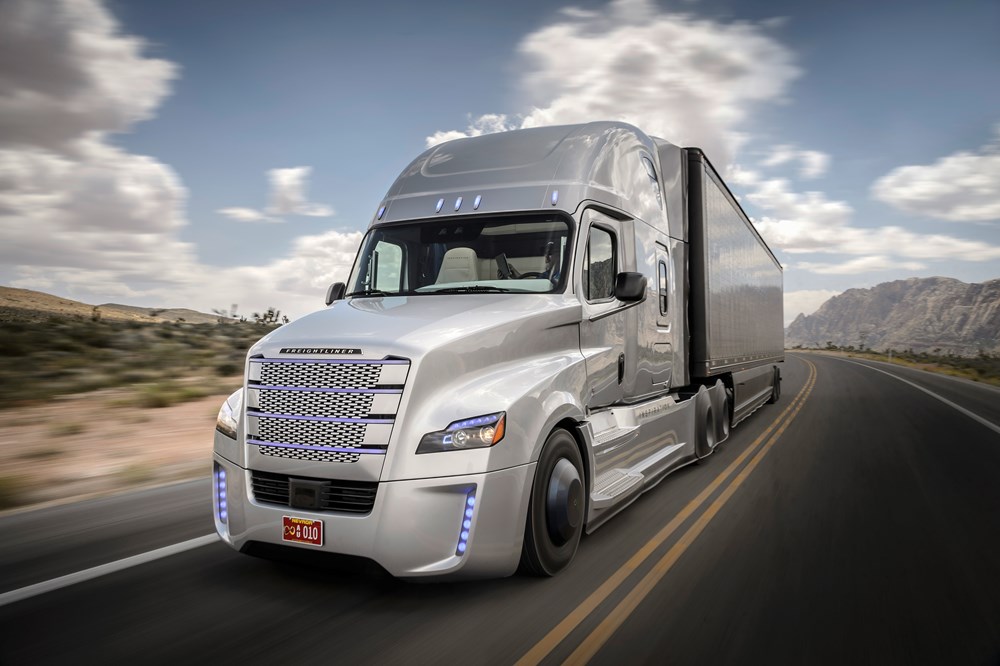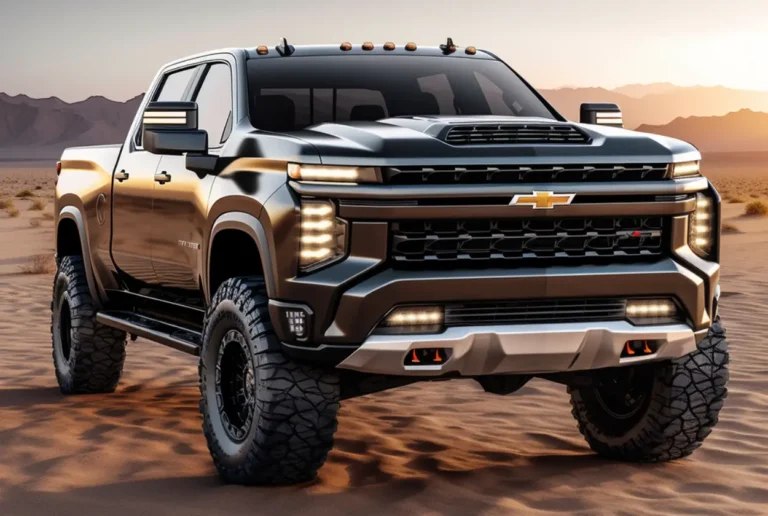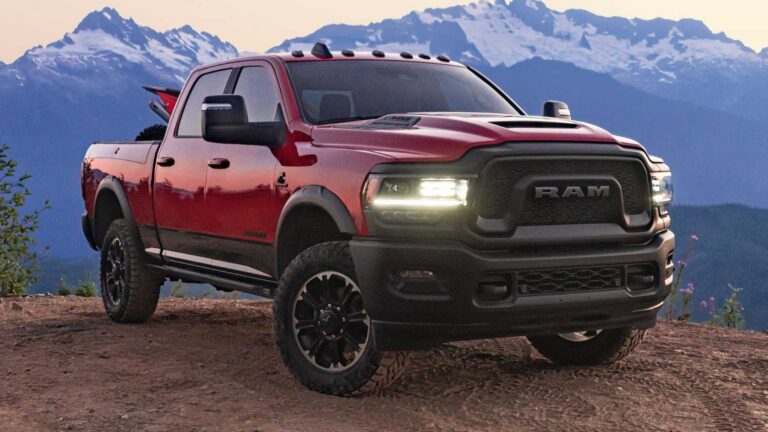The Definitive Guide to Truck Cap Fit Charts: Ensuring a Perfect Match for Your Truck
The Definitive Guide to Truck Cap Fit Charts: Ensuring a Perfect Match for Your Truck cars.truckstrend.com
For truck owners, a truck cap (also known as a camper shell or tonneau cover) is more than just an accessory; it’s an essential upgrade that transforms the open bed into a secure, weather-protected, and versatile storage space. Whether you’re hauling tools, camping gear, or groceries, a truck cap offers invaluable utility. However, the success of this upgrade hinges entirely on one critical factor: fitment. This is where the concept of a Truck Cap Fit Chart becomes indispensable.
A Truck Cap Fit Chart is a comprehensive reference guide, typically provided by manufacturers and retailers, that outlines the precise dimensions and specifications of truck caps compatible with various truck makes, models, and years. It’s not a one-size-fits-all solution, but rather a meticulous cross-referencing system designed to ensure that the cap you choose seamlessly integrates with your specific vehicle. Misunderstanding or neglecting this chart can lead to costly mistakes, compromised security, poor aesthetics, and ineffective weather sealing. This article will delve deep into the world of truck cap fit charts, explaining their importance, how to use them, and what factors contribute to achieving that coveted perfect fit.
The Definitive Guide to Truck Cap Fit Charts: Ensuring a Perfect Match for Your Truck
Understanding the Basics of Truck Cap Fitment
The seemingly simple task of putting a lid on a truck bed is, in reality, a complex engineering challenge. Trucks come in an astonishing array of configurations, and even subtle differences can dramatically affect cap compatibility. A truck cap isn’t just about covering the bed; it’s designed to align with the truck’s body lines, cab height, and tailgate design, creating a cohesive and functional unit.
The primary reason there isn’t a universal truck cap is the variability in truck bed dimensions. Key measurements that dictate fitment include:
- Bed Length: This is the most crucial measurement, typically categorized as short bed (e.g., 5.5 ft), standard bed (e.g., 6.5 ft), or long bed (e.g., 8 ft). Even slight variations of an inch or two can make a cap incompatible.
- Bed Width: While less variable than length, the width of the bed rails and the tailgate opening can differ significantly between manufacturers and models.
- Cab Height and Style: Caps are designed to either be "cab-high" (matching the height of the truck’s cab roofline) or "mid-rise/high-rise" (extending above the cab). The angle and height of the truck’s cab are considered in the cap’s design to ensure proper aesthetics and aerodynamics.
- Tailgate Design: Modern tailgates can feature various contours, spoilers, or step systems that require specific cap designs for proper closure and sealing.
- Body Lines and Rail Caps: The subtle curves and lines of a truck’s bed rails and the presence of factory or aftermarket rail caps influence how a cap sits and seals.

Manufacturers invest heavily in tooling to create molds for caps that precisely match the contours of specific truck generations. This commitment to precision is why relying on a fit chart is paramount.
The Anatomy of a Truck Cap Fit Chart
A Truck Cap Fit Chart is a systematic breakdown of compatibility. While formats may vary slightly between brands (e.g., Leer, ARE, SnugTop, ATC), the core information remains consistent. Typically, a chart will present data in columns or a searchable database, including:

- Truck Make: (e.g., Ford, Chevrolet, Ram, Toyota, Nissan)
- Truck Model: (e.g., F-150, Silverado 1500, Ram 1500, Tacoma, Titan)
- Year Range: (e.g., 2015-2020, 2021-Present) – This is vital as even within the same model, truck body styles can change significantly over different production years.
- Cab Style: (e.g., Regular Cab, Extended Cab, Crew Cab) – While the bed length might be the same, the overall truck length and sometimes subtle bed dimensions can vary with cab style.
- Bed Length: (e.g., 5.5′, 6.5′, 8′) – Often presented in feet and inches.
- Corresponding Cap Model Numbers/Series: This is the direct output of the chart, indicating which specific cap models or series are designed for your truck’s exact specifications. For instance, a chart might state that a "Leer 100XR" fits a "2020 Ford F-150 Crew Cab with a 5.5′ bed."

Modern fit charts are often digital and interactive, available on manufacturer websites or through dealer software. This allows users to input their vehicle’s details and instantly retrieve compatible options, streamlining the selection process.
Benefits of Using a Fit Chart
The advantages of diligently consulting a truck cap fit chart cannot be overstated:
- Ensures Proper Aesthetics: A perfectly fitted cap looks like an extension of your truck, not an add-on. It aligns with body lines, enhancing the vehicle’s overall appearance.
- Guarantees Weather Sealing: A precise fit is crucial for keeping rain, snow, and dust out of your truck bed, protecting your valuable cargo from the elements. Gaps lead to leaks.
- Maximizes Security: A cap that fits snugly and latches correctly provides optimal security against theft. Misaligned caps can be pried open more easily.
- Prevents Damage: An ill-fitting cap can rub against the truck’s paint, cause vibrations, or even damage the bed rails. Proper fitment prevents these issues.
- Saves Time and Money: Avoiding the purchase of an incorrect cap prevents the hassle and expense of returns, restocking fees, or costly modifications.
- Maintains Resale Value: A well-fitted, factory-specified cap adds significant value to your truck, whereas a poorly fitted or modified cap can detract from it.
How to Accurately Use a Truck Cap Fit Chart (A Step-by-Step Guide)
Using a fit chart effectively requires precision and attention to detail. Follow these steps for accurate results:
-
Identify Your Truck’s Exact Details:
- Year: The model year of your truck. Check your registration or VIN.
- Make: The manufacturer (e.g., Toyota, GMC).
- Model: The specific model (e.g., Tundra, Sierra 2500).
- Cab Style: (e.g., Regular Cab, Double Cab, CrewMax, Quad Cab).
- Bed Length: This is paramount. If you’re unsure, measure it yourself. Measure along the top inside edge of the bed from the bulkhead (front of the bed) to the inside edge of the tailgate. Do not measure diagonally or from the outside. Common lengths are 5.5 ft (short), 6.5 ft (standard), and 8 ft (long).
-
Locate the Fit Chart:
- Manufacturer Websites: Most major truck cap manufacturers have dedicated "Fit Guides" or "Build Your Own" tools on their official websites.
- Authorized Dealers: Local truck accessory shops and dealerships that sell truck caps will have access to detailed fitment charts, often with proprietary software.
- Third-Party Retailers: Online retailers specializing in truck accessories may also provide fitment tools.
-
Cross-Reference Your Truck’s Details: Input or select your truck’s year, make, model, cab style, and bed length into the chart or tool. The system will then filter for compatible cap options.
-
Understand Specific Cap Series/Models Listed: The chart will typically output a list of specific cap series (e.g., ARE CX Revo, SnugTop Rebel) that fit your vehicle. Each series offers different features, aesthetics, and price points.
-
Consider Additional Factors (Before Final Purchase):
- Bed Liner Type: Drop-in bed liners can sometimes reduce the effective bed width or interfere with clamping systems. Spray-in liners typically pose no issue.
- Rail Caps: Aftermarket rail caps can alter the thickness of the bed rail, potentially affecting the cap’s seal or clamp placement.
- Tailgate Clearance: Ensure the cap design allows for full, unhindered operation of your tailgate, especially if you have an integrated step or multi-function tailgate.
- Utility Tracks: If your truck bed has factory utility tracks (e.g., Toyota Deck Rail System), ensure the cap is designed to accommodate them or that suitable adapters are available.
-
When in Doubt, Consult an Expert: If you’re still unsure after consulting the chart, or if your truck has unique modifications, always contact an authorized truck cap dealer. They have the experience and resources to guarantee a perfect fit.
Common Challenges and Solutions in Fitment
Even with a chart, specific scenarios can present challenges:
- Challenge: Aftermarket Bed Accessories.
- Solution: Communicate any existing bed liners, rail caps, or utility systems to your dealer. Many cap manufacturers offer specific clamps or installation methods for trucks with these accessories. Some drop-in liners may need minor trimming.
- Challenge: Older or Less Common Truck Models.
- Solution: Fit charts primarily cover popular and recent models. For vintage or niche trucks, finding a direct fit can be difficult. You might need to search for used caps from the same truck generation, consider a universal-fit cap (which often requires custom sealing/mounting), or explore custom fabrication options.
- Challenge: Misunderstanding Bed Lengths.
- Solution: Always measure your bed yourself, even if you think you know the length. Manufacturers sometimes round up or down, and a "6-foot bed" might actually be 6.5 feet, for example. Small discrepancies matter.
- Challenge: Slight Gaps or Misalignments After Installation.
- Solution: This can sometimes occur due to minor manufacturing tolerances or installation nuances. Professional installers can use additional weather stripping, shims, or adjust the cap’s position to achieve a perfect seal and alignment.
- Challenge: Choosing the Right Cap Height.
- Solution: While a fit chart confirms the cap will fit the bed, it doesn’t always guide the style choice. Decide between cab-high (sleek, integrated look) and mid-rise/high-rise (more cargo volume) based on your utility needs and aesthetic preferences.
Types of Truck Caps and How Fitment Varies
While the fundamental bed dimensions dictate the primary fit, the type of truck cap chosen impacts the overall look and functionality:
- Cab-High Caps: Designed to be flush with the truck’s cab roofline. They offer a streamlined appearance and good aerodynamics. Fitment here focuses on matching the precise height and angle of the cab.
- Mid-Rise Caps: Slightly taller than cab-high, typically adding 2-6 inches of vertical space. These are popular for those needing a bit more cargo room without sacrificing too much aesthetics. The fit chart still ensures the bed dimensions are correct; the "rise" is a design feature.
- High-Rise/Commercial Caps: Significantly taller, often extending a foot or more above the cab. These maximize cargo volume and are frequently used by contractors or for camping. While the base still fits the bed, the increased height requires a cap specifically molded for that elevation.
- Wedge Caps: Feature a tapered design, rising from the front of the bed to the rear. Again, the bed dimensions are critical, but the unique profile is a stylistic choice.
- Specialty Caps: Include models with side access doors, roof racks integrated into the design, or specific work-truck configurations. All still rely on precise bed fitment.
Regardless of the style, the underlying principle of fitment remains the same: the cap’s base must precisely match the dimensions and contours of your truck’s bed rails and tailgate.
Tips for a Successful Truck Cap Purchase and Installation
- Always Verify Measurements: Don’t rely on assumptions. Measure your truck bed yourself.
- Read Reviews Specific to Your Truck Model: Look for other owners of your exact truck year/make/model who have purchased the same cap. Their experiences can offer valuable insights.
- Consider Professional Installation: While some caps can be DIY installed, professional installers have the tools, experience, and knowledge to ensure a perfect, watertight seal and secure mounting. They can also troubleshoot minor fitment issues.
- Inspect the Cap Upon Arrival: Before installation, thoroughly inspect the cap for any shipping damage or manufacturing defects.
- Understand Warranty and Return Policies: Know what your options are if the cap doesn’t fit as expected or arrives damaged.
- Don’t Rush the Decision: A truck cap is a significant investment. Take your time, do your research, and use the fit chart as your primary guide.
Common Truck Bed Dimensions and Corresponding Cap Fit Examples
Below is a generalized table illustrating how a truck cap fit chart might guide you. Please note that exact cap model numbers will vary by manufacturer (e.g., Leer, ARE, SnugTop) and specific year ranges. This table is for illustrative purposes to demonstrate the concept of fitment.
| Truck Make | Truck Model | Typical Years | Cab Style | Bed Length (Approx.) | Common Cap Series/Fit Notes (Illustrative) |
|---|---|---|---|---|---|
| Ford | F-150 | 2015-Present | SuperCrew | 5.5 ft | Fits Leer 100R, ARE MX, SnugTop Rebel (Specific to 5.5′ bed) |
| Ford | F-150 | 2015-Present | SuperCrew/SuperCab | 6.5 ft | Fits Leer 100XL, ARE CX Revo, SnugTop Sport Hi-Liner (Specific to 6.5′ bed) |
| Chevrolet | Silverado 1500 | 2019-Present | Crew Cab | 5.8 ft (Short) | Fits Leer 100RCC, ARE V-Series, SnugTop XTR (Specific to 5’8" bed) |
| Chevrolet | Silverado 1500 | 2019-Present | Double Cab | 6.6 ft (Standard) | Fits Leer 100XQ, ARE Z-Series, SnugTop Aero Sport (Specific to 6’6" bed) |
| Ram | Ram 1500 | 2019-Present | Crew Cab | 5.7 ft (Short) | Fits Leer 100R, ARE CX Classic, SnugTop Outback (Specific to 5’7" bed) |
| Ram | Ram 1500 | 2019-Present | Quad Cab | 6.4 ft (Standard) | Fits Leer 100XR, ARE Z-Series, SnugTop Rebel (Specific to 6’4" bed) |
| Toyota | Tacoma | 2005-Present | Double Cab | 5 ft | Fits Leer 180, ARE MX, SnugTop Hi-Liner (Specific to 5′ bed) |
| Toyota | Tacoma | 2005-Present | Access Cab | 6 ft | Fits Leer 100XR, ARE V-Series, SnugTop Sport Hi-Liner (Specific to 6′ bed) |
| Nissan | Titan | 2016-Present | Crew Cab | 5.5 ft | Fits Leer 100R, ARE Z-Series, SnugTop Rebel (Specific to 5.5′ bed) |
| GMC | Canyon/Colorado | 2015-Present | Crew Cab | 5 ft | Fits Leer 100R, ARE CX Series, SnugTop XTR (Specific to 5′ bed) |
| GMC | Canyon/Colorado | 2015-Present | Extended Cab | 6 ft | Fits Leer 100XR, ARE V-Series, SnugTop Sport Hi-Liner (Specific to 6′ bed) |
Note: This table is a simplification. Actual fit charts are far more detailed, listing specific cap models and their features.
Frequently Asked Questions (FAQ)
Q: Can I use a truck cap from a different make/model truck on my vehicle?
A: Generally, no. Truck beds vary too much in length, width, and contour between makes and even models within the same make. Using an ill-fitting cap will result in poor aesthetics, leaks, and compromised security.
Q: How do I accurately measure my truck bed for a cap?
A: Measure the inside length of your truck bed from the bulkhead (the wall closest to the cab) to the inside edge of the tailgate, along the top of the bed rails. Also, measure the inside width between the bed rails at both the front and rear.
Q: What if my truck has a bed liner?
A: Most caps are designed to work with spray-in bed liners. If you have a drop-in plastic bed liner, it might interfere with the cap’s clamping system or reduce the effective bed width. Inform your dealer, as some liners may require minor trimming or specific clamps.
Q: Are "universal" truck caps available?
A: While some companies offer generic, clamp-on covers, they are rarely true "caps" in the sense of providing a sealed, contoured fit. They often compromise on aesthetics, weather protection, and security compared to a custom-fit cap.
Q: What’s the difference between a cab-high and a mid-rise truck cap?
A: A cab-high cap is designed to align precisely with the height of your truck’s cab roofline, offering a sleek, integrated look. A mid-rise cap extends a few inches higher than the cab, providing increased cargo volume, which is beneficial for carrying taller items.
Q: Do truck caps affect fuel economy?
A: Studies have shown varying results, but generally, a well-fitted, aerodynamic truck cap can slightly improve fuel economy by reducing aerodynamic drag created by an open truck bed. However, the weight of the cap itself can slightly offset this benefit.
Q: How are truck caps attached to the bed?
A: Truck caps are typically attached using clamps that secure the cap’s frame to the truck’s bed rails. Most modern caps are "no-drill" installations, meaning they don’t require drilling holes into your truck bed.
Conclusion
The journey to acquiring the perfect truck cap begins and ends with understanding and utilizing the Truck Cap Fit Chart. Far from being a mere suggestion, this chart is the definitive blueprint for ensuring your chosen cap is an ideal match for your specific vehicle. By meticulously identifying your truck’s details, cross-referencing them with the chart, and considering all relevant factors, you can avoid costly errors and achieve a seamless, functional, and aesthetically pleasing integration. A perfectly fitting truck cap doesn’t just protect your cargo; it elevates your truck’s utility and appearance, ensuring years of dependable service and enhancing your overall ownership experience.






